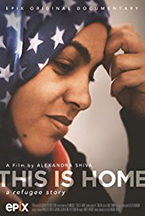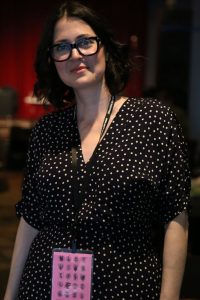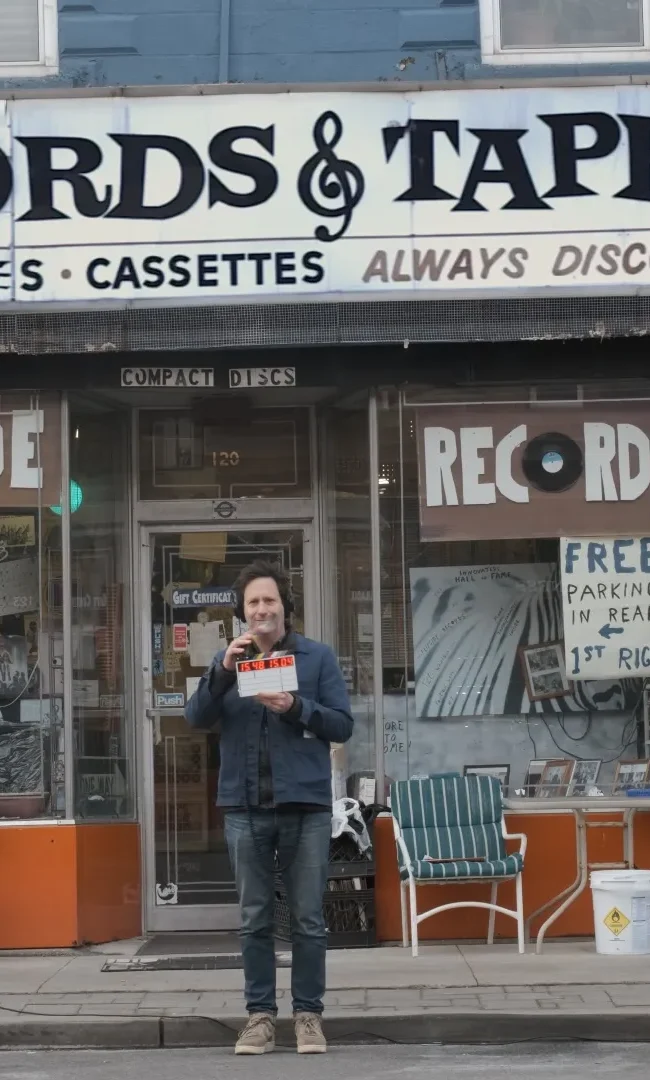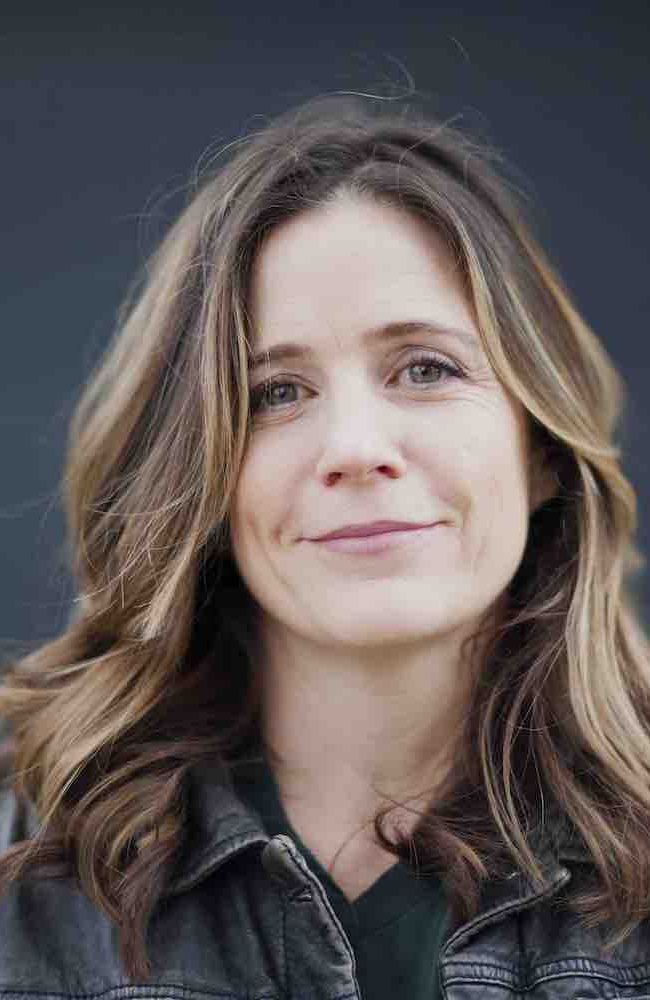A Conversation with Alexandra Shiva (THIS IS HOME)
 I met with director Alexandra Shiva (How to Dance in Ohio) on Saturday, May 5, 2018, at the Maryland Film Festival (MdFF), to discuss her inspiring new documentary This Is Home: A Refugee Story (which I also reviewed), set in my hometown of Baltimore, as were the other three films whose directors I interviewed at the fest. The movie follows four Syrian families as they adapt to life in the United States, to which they have arrived after an arduous journey through war and refugee camps. Given but 8 months to learn English and become self-sufficient, they struggle (as anyone would) to build a new home in (to them) alien surroundings. That they succeed is a testament to the resourcefulness and resilience of the human spirit. Here is a condensed digest of our conversation, edited for length and clarity.
I met with director Alexandra Shiva (How to Dance in Ohio) on Saturday, May 5, 2018, at the Maryland Film Festival (MdFF), to discuss her inspiring new documentary This Is Home: A Refugee Story (which I also reviewed), set in my hometown of Baltimore, as were the other three films whose directors I interviewed at the fest. The movie follows four Syrian families as they adapt to life in the United States, to which they have arrived after an arduous journey through war and refugee camps. Given but 8 months to learn English and become self-sufficient, they struggle (as anyone would) to build a new home in (to them) alien surroundings. That they succeed is a testament to the resourcefulness and resilience of the human spirit. Here is a condensed digest of our conversation, edited for length and clarity.
Hammer to Nail: Alexandra, your film is set in Baltimore. Do you have a personal Baltimore connection?
Alexandra Shiva: I do not have a Baltimore connection, except that I have two very close friends who are from Baltimore, and I find it really interesting. I love the city. I had never been here before, when I came to see the International Rescue Committee’s office – their Baltimore Office – and I loved it. I felt like this was the perfect place to make this movie, for so many reasons, but the office, itself, while it is very specific and unique, also does feel very vibrantly like America, in a way that I loved.
HtN: There aren’t a lot of Syrian refugees in the United States, as we know by paying attention to the news or by seeing your film, but they have gone elsewhere than Baltimore. Why follow this particular group, then, to Baltimore?
AS: Well, a lot of that had to do with the office. The International Rescue Committee [IRC] became our home; they allowed us to embed in their office. When we discussed it with headquarters in New York, they talked about specific offices that they really loved, and one of them was the Baltimore office. And I’m in New York, and Baltimore is close by and I’d heard wonderful things about it, and when I came down to see it, I loved the people in the office. I loved the look of the office, I loved where it was located, everything about it. I loved that there were refugees who had become caseworkers.
There’s one caseworker in the film who is a senior caseworker, and her partner – who is also a senior caseworker – was her caseworker, 10 years ago! So, I loved that element of the office, and I just thought it was very interesting. What I know about Baltimore is that there is a lot of tension here, and there is a lot of pride, and people are trying to rebuild, in many ways, in different neighborhoods, and so the idea that people were trying to rebuild in this city and the refugees were trying to rebuild their lives felt like an interesting connection to me.
HtN: Fair enough! So, it seems incredible to me that these folks are given only 8 months to become self-sufficient. That was one of the more mind-blowing facts in your film, to me. Is that a new thing, or has that always been the case?
AS: So, 8 months is sort of the average in the country, but it is also specific to the Baltimore office. They actually only have 3 months, from the government, to get it together, and different states … for example, that’s money raised by IRC. So IRC is raising the money to allow for the 8 months of support on top of the 3 months.
HtN: And they raise the money from…
AS: Private sources, philanthropists, all sorts of grants they can get, and they are providing 8 months of support. It’s shocking, though, the idea that 3 months is expected.
HtN: That’s what the federal government mandates: we’ll give you 3 months, after which you’re supposed to be self-sufficient.
AS: They’re supposed to be self-sufficient, but they’re entitled to benefits if they’re below the poverty line, like everyone else, but then you’re in the system. You’re going to the Department of Social Services and dealing with all of those issues. But really, yes, you’re here, get on your feet, and make a life. And I think, if they had more money, that they would give them more time. For example, in Utah, the state actually helps support the resettlement process, and so they have two years.

Director Alexandra Shiva
HtN: Wow! So, if you’re a refugee, you want to go to Utah.
AS: Yes! In fact, Utah took in 700 Syrian families that they accepted, that they prepared for, that have not arrived, because they can’t get in.
HtN: There’s a double cruelty there, embedded in that fact. Wow. So, here I am thinking, “Only 8 months,” and yet it’s from the generosity of donors that they even get that. That’s impressive. So, on another topic, there’s this recurring theme in your film, which you don’t dwell on, but it’s there, of the aspirations of women from very conservative societies, coming to the United States and beginning to dream of other things. A number of times, they talk about learning to drive. The young women, whose mother abandoned them, and now they’re living with her again, want nothing more than to get an education. This is inspirational, it’s wonderful, but you don’t make a big deal about it. It’s a secondary narrative. Did you consider, at any point, making your film more of the women’s story of liberation?
AS: I think it’s there. I think you noticed it because I did, in a funny way, but I didn’t want to imbalance the film too much, because I think that what’s going on for the men is equally as important. I think there’s a huge cultural shift that happens. They have arrived in a place that is not home, that is not their culture, with a language that they don’t understand, and customs that they don’t understand. There’s a dignity-preservation piece, for the men, that’s very intense, and they don’t understand why their wives are going to work, and they don’t want them to work. It can come off however you want to read it – we were careful how we positioned it in the film – but it is a dignity-preservation attempt.
And, for the women, I think…I’m not going to say that women are more adaptable, but…(laughs)…I do think that what is interesting to me is that these are women who have already been through the change of being in their family, then being married, being in a new family and all of that structural change, having children and all of that change. I found the women to be very adaptive. They took on roles that they weren’t ever necessarily expecting that they were going to. And a lot of the women that I spoke to were excited about working!
HtN: I think that’s a really interesting way to think about gender differences in our world today, still. It may change, in the future…(knocks on table)…but I think women, as you say, or just more used to change being foisted on them, without a choice, whereas for men, there is this tendency to want to resist, because we’re used to getting our own way. But I do think, for the record, that you’re respectful to the men.
AS: Thank you.
HtN: I mean, they need to adapt, but I don’t want to be arrogant and culturally insensitive, and I think you handle that well. It reminded me of a nicer version of that silent film by Alice Guy-Blaché, Making an American Citizen. Have you ever seen that?
AS: No, but I want to!
HtN: It’s very hokey and simplistic, but it’s about this Russian couple that comes to the United States, and the husband mistreats his wife, but then he learns to be a better man in the course of the film. So, was there anyone besides [one of your subjects] Mohammad’s wife, who didn’t want to be in the film, or anyone whom you wanted to include in the film, but couldn’t, for whatever reason? Or were these four couples it, from the get-go? What was your process of choosing and winnowing down your subjects?
AS: I definitely would have wanted to include Mohammad’s wife, but she couldn’t, because of safety concerns for her family, but there’s a scene – I don’t know if you realized it – with [another subject] Yasmin, where you can see Yasmin, but you can’t see anyone else’s face. It’s all women, and you just see the back of their hijabs, or the side of their hijabs, or you see them and they’re a little blurry. There was an entire group of women that said “no way.”
HtN: Ah! Interesting…
AS: And then one of the women who said “no way” then, 2 months later, said, “I actually would like you to film me,” and it’s [another subject] Madiha! So, she actually was in those scenes, but we were trying to avoid filming her, and we had little moments that we were meant to cut out, but then, 2 months later, she said she was happy to be in the film.
HtN: That’s fascinating, because she’s one of your main characters.
AS: Yes, she is!
HtN: So, how did that happen? How did she decide to be a part of the film?
AS: Well, we were asking IRC if they knew of any other people whom we might have met, or hadn’t met yet, who might have an interesting story, and they talked about this family, and I went to meet them, and immediately fell in love with Madiha, and felt like she was someone who had to be in the film. To me, she’s the heart of the film; she really is the grounding piece. And she’s such an interesting adaptive personality, because she, in the warmest way possible, collects people. I mean, we literally have a support group now, around her, of mostly American women who are all on team Madiha. We talk to each other, we plan things, we figure out things. I get texts from Leah, who is in the film, as well, and there’s a woman named Deborah and there’s a woman named Beth … there’s really an incredible community around her. That’s her talent.

A shot from “This is Home”
HtN: Indeed. It seems to be! In fact, that was something I wanted to ask you about: how did she meet this American friend, Leah? We don’t see how they met, but all of a sudden, there’s a woman in the film, named Leah, an American, who not only is a friend of Madiha, but now her entire church is involved in helping Madiha’s family with a fundraiser. How did that come about?
AS: Well, I heard about Leah through someone else. I heard that Madiha had a mentor, and then whenever I would call her “Madiha’s mentor,” she would correct me and say, “I’m her friend.” And she is! They’re very close friends. She met her through a woman named Najwa, I believe, who is Syrian and came 20 years ago, whom Madiha met, somehow. And then Leah felt very strongly that her church should get involved, in some way, and used it as a cultural exchange, which was incredible. She did this entire dinner where people were going to learn about Syria and learn about this family’s experience. And Madiha cooked, they sold tickets, Madiha got to keep the money and it was an incredible experience for her. And they just did another one this past Sunday!
HtN: Wow! Given all the horrible things in this world, right now, and the anti-immigrant hysteria in this country, it’s really heartwarming to see that and to see a church group coming together to support them. That’s really fascinating how Madiha collects people. So, how long did you film for?
AS: We filmed for a year. We started in May of 2016 and we were done by June of 2017.
HtN: And how long did it take after that, in post?
AS: We were actually editing at the same time, so we finished editing in October.
HtN: What was the size of your crew?
AS: We had an incredible crew. We had a team that I had worked with before, including the camerawoman Laela Kilbourn, who’s incredible, and Josh Isaac, who’s the sound recordist. And then, we really needed local crew, and we were so lucky to find John Benam, who shot The Keepers and Charm City, and he was just amazing, and he ended up doing all the drone footage, as well; all our beauty shots. He really did a lot of beautiful Baltimore footage. I think that seeing Baltimore through his eyes was really interesting. And then we had a local assistant camera named Nick Gorey, who was terrific. Sometimes he would just go to family’s houses and check in with them. And John is now friends with Madiha and her family. He and his wife have had them over for dinner.
HtN: (laughs) Because Madiha collects people.
AS: (laughs) She does, in the best way possible! In the movie, she’s always got someone over for coffee. There’s a reason why that’s in there. She’s super “sosh.” That’s what I call her. She’s the “super sosh.”
HtN: Well, good for her, and good for you! Congratulations on the film. It’s really beautiful.
AS: Thank you so much!
– Christopher Llewellyn Reed (@ChrisReedFilm)











